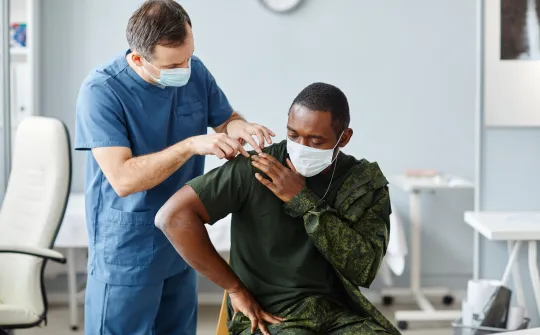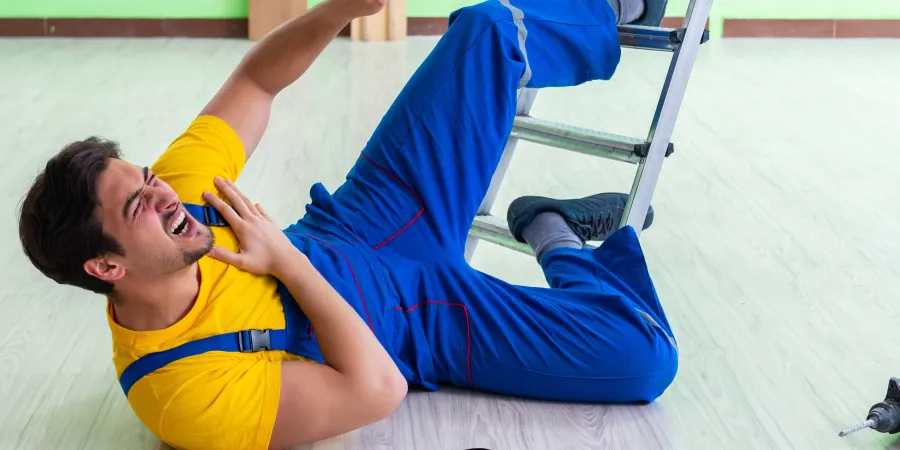The effects of a dislocation are usually immediate. If you notice any of these symptoms, get medical help immediately. Do not attempt to push your arm back into place - this can damage the joint or surrounding tissues and potentially complicate your injury. A splint or sling can help to immobilize your shoulder while you await medical assistance. Icing the injured joint can also help to reduce pain and swelling. The most common symptoms include:

Shoulder Instability
Cause, Symptoms and Treatment of Shoulder Instability
A dislocated shoulder can be incredibly painful. After it becomes dislocated once, the shoulder is much more prone to future dislocation. Dr. Edward Seade can treat shoulder instability and strengthen the joint against further injury at our Austin, TX, office. Contact us today to learn more about your options for shoulder joint treatment.

How the shoulder Joint Works
Shoulder dislocation occurs when the upper arm bone (humerus) is forced out of the shoulder socket, or when the joint is extended beyond its normal range of motion. The shoulder comprises three separate bones - the humerus, shoulder blade, and clavicle - held together primarily by muscles, tendons, and ligaments. It is one of the most mobile joints in the body, but especially prone to dislocation, both full and partial.

How Dislocation Occurs
The shoulder is usually dislocated as the result of a strong or sudden blow. The more physically active you are, the greater your risk of shoulder dislocation. Males in their teens and twenties are the most common cases of shoulder dislocation.
The most common causes are:

Vehicular accidents

Sports Injuries

Falls
Symptoms
Visible deformation of the shoulder
Swelling or bruising
Intense pain
Inability to move the joint
Numbness
Weakness in the joint
Tingling in the neck or down the arm
Muscle spasms
Treatment
Correcting a dislocated shoulder is sometimes just a matter of reinserting the humerus into its socket. Using gentle maneuvers to minimize discomfort or further damage, Dr. Seade can quickly place the bone back into place. If the pain or swelling is severe, you may need a muscle relaxant or sedative to avoid tearing any muscles. However, once the bones are reconnected, the pain often improves almost immediately.
Dr. Seade may recommend wearing a sling or splint to keep the joint from moving while you heal. Depending on the severity of the injury and how soon the splint or sling was applied, you may need to wear it anywhere from several days to several weeks.
Although we will recommend minimally invasive solutions whenever possible, simply replacing the bone in the socket may not always be sufficient. Torn muscles, ligaments, or tendons can severely destabilize the joint while damaged nerves or blood vessels can impair your ability to move or heal. Patients with severe or repeated dislocations can develop chronic shoulder instability. If any of the supporting structures of the shoulder joint become damaged or weakened, you may require surgery.

Recovery
Your specific recovery timeline will depend on the extent of the injury. If you undergo surgery, you can expect more downtime than if the bone is simply replaced in the socket. Recovery following shoulder dislocation is primarily a matter of rest. Patients should avoid repeating the specific action that caused the dislocation, as well as any other movements that cause pain. Heavy lifting should not be attempted until Dr. Seade determines you are ready.
Ice and heat can ease discomfort considerably. Dr. Seade may recommend applying a cold pack or a bag of frozen vegetables to the shoulder in 15-minute increments every few hours. This helps to reduce pain and inflammation. Once the pain has subsided, switching to heating pads or hot compresses for 20 minutes at a time will relax tight or sore muscles. Over-the-counter pain relievers, such as aspirin or Tylenol, can also alleviate pain during your recovery.
Eventually, it is important to begin gentle exercises prescribed by Dr. Seade. Long-term inactivity can lead to stiff joints. Once the joint is healed, you can begin a gradual rehabilitation program to restore your full range of motion
